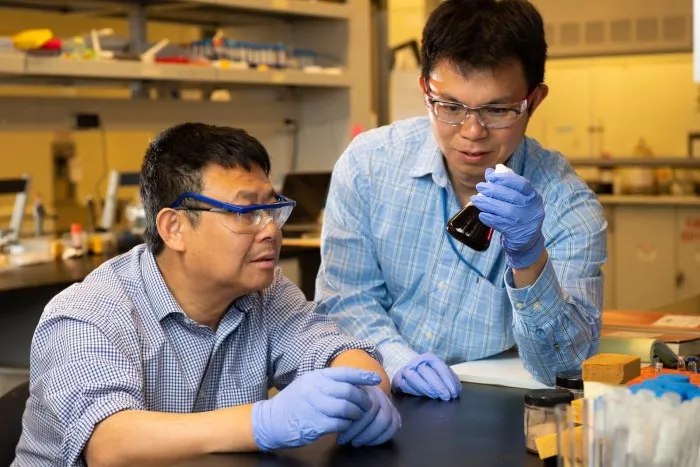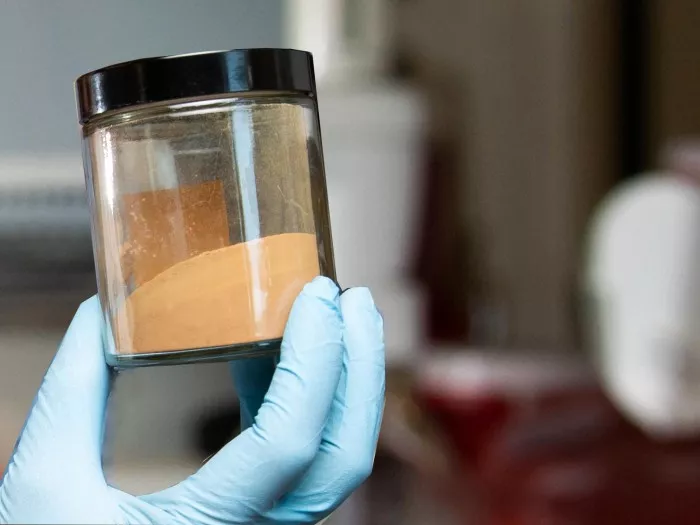A new artificial enzyme has been shown to bite off lignin, a tough polymer that helps woody plants maintain their structure In addition, lignin has great potential for storing renewable energy and materials. A research team from Washington State University and the Northwest Pacific National Laboratory (PNNL) of the U.S. Department of energy proved that their artificial enzymes successfully digested lignin.
It is understood that lignin stubbornly resisted previous attempts to develop it into economically useful energy.
Lignin is the second abundant renewable carbon source on the earth. As a fuel source, it is mostly wasted. When wood is burned for cooking, lignin by-products help bring a smoky taste to food. But burning releases all this carbon into the atmosphere, rather than collecting it for other uses.

"Our biomimetic enzymes show hope in degrading real lignin, which is considered as a breakthrough," said Xiao Zhang, the corresponding author of the paper, gene of WSU and associate professor of Linda Volland School of chemical engineering and bioengineering. "We think there is an opportunity to develop a new kind of catalyst and truly solve the limitations of biological and chemical catalysts."
Lignin is found in all vascular plants. It forms cell walls and provides rigidity for plants. Lignin enables trees to stand, makes vegetables hard and accounts for about 20-35% of the wood weight. Because lignin turns yellow when exposed to air, the wood products industry removes it as part of the fine papermaking process. Once removed, it is often burned inefficiently to produce fuel and electricity.
For more than a century, chemists have been trying to make valuable products with lignin, but they all ended in failure. This dismal record may be about to change.
Better than nature
"This is the first enzyme that mimics nature. We know that it can effectively digest lignin and produce compounds that can be used as biofuels and chemical production," said Chun long Chen, corresponding author, researcher at the Northwest Pacific National Laboratory and associate professor of chemical engineering and chemistry at the University of Washington.
In nature, fungi and bacteria can use their enzymes to decompose lignin, which is the decomposition way of logs covered with mushrooms in the forest. Enzymes provide a more environmentally friendly process than chemical degradation, which requires high heat and consumes more energy than it produces.

But natural enzymes degrade over time, making them difficult to use in industrial processes. In addition, they are very expensive.
"It is really difficult to produce meaningful amounts of these enzymes from microorganisms for practical use. Then once you isolate them, they become very fragile and unstable. But these enzymes provide a good opportunity to stimulate models that replicate their basic design," Zhang said.
Although researchers have been unable to use natural enzymes to work for them, they have learned a lot about how they work for decades. Zhang's research team recently published a review article outlining the challenges and obstacles in the application of lignin degrading enzymes. "Understanding these barriers provides new insights into the design of biomimetic enzymes," he added
Peptide like scaffold is the key
In the current study, the researchers replaced the peptides around the active site of natural enzymes with protein molecules called peptide like compounds. Then these peptide like compounds self assemble into nano crystalline tubes and sheets. Peptide like compounds were first developed in the 1990s to mimic the functions of proteins. They have several unique features -- including high stability -- that enable scientists to address the shortcomings of natural enzymes. In this case, they provide a high density of active sites, which is impossible in natural enzymes.
"We can precisely organize these active sites and adjust their local environment for catalytic activity. We have a higher density of active sites than one," Chen said
As expected, these artificial enzymes are also more stable and powerful than the natural version, so they can work at temperatures as high as 60 degrees Celsius, which will destroy the natural enzymes.
"This work really opens up new opportunities," Chen said. "It is an important step forward in converting lignin into valuable products in an environmentally sound way."
If the new biomimetic enzyme can be further improved to improve the conversion rate and produce more selective products, it may be expanded to industrial scale. This technology provides a new way and other applications for renewable materials of aviation biofuels and bio based materials.